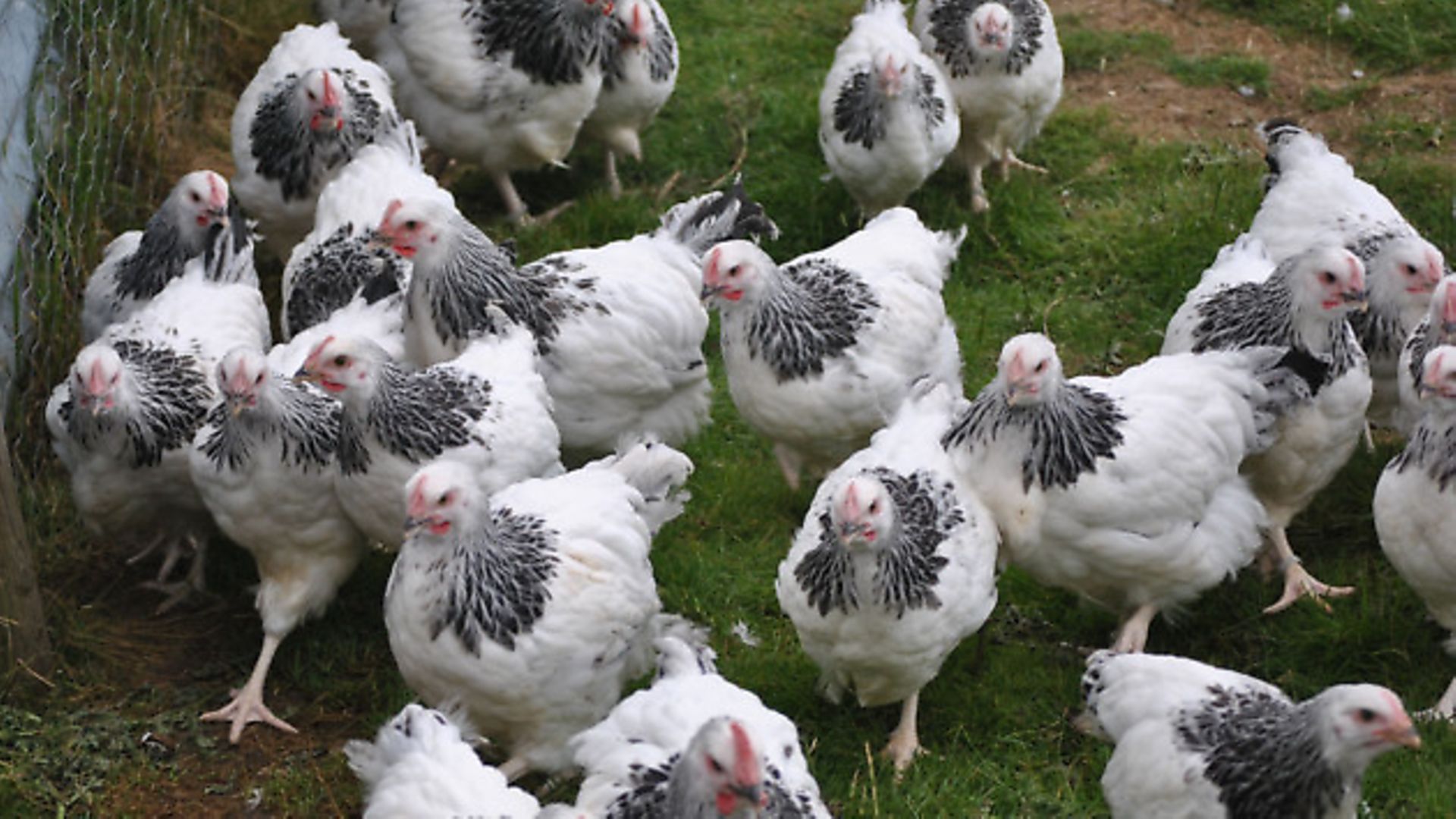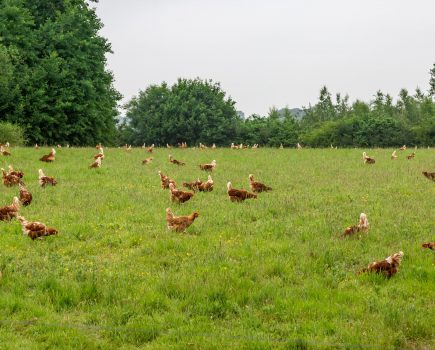Experienced poultrymen Grant Brereton and Andy Cawthray have been visiting leading poultry people. This month, they feature a top breeder who has decided to call it a day; Nick Smith, from Herefordshire, a legendary breeder of the light Sussex, is to stop breeding large fowl and just concentrate on bantams

Nick Smith’s introduction to the world of poultry was immediate. Being the son of a commercial poultry keeper, he was surrounded by traditional breeds from day one. His father, Fred, was a producer of the old ‘Rhode Island Red over light Sussex’ sex-linked layers and was one of the first people in the UK to introduce the deep-litter system.
Fred was a keen breeder of the light Sussex and, between them, they have sold tens of thousands of birds over the years. They have supplied such a vast quantity of people with light Sussex, from exhibitors to backyard poultry keepers, that few in existence today won’t be traceable back to the Smith line; with many of them going on to win major classes at the Sussex Club shows.
When Nick was 17, he took over as Sussex Breed Club secretary and stayed in the role for a few years, promoting and enthusing about his beloved light Sussex.
“I have been around poultry all my life,” says Nick. “My first birds came from some hatching eggs given to me at just 12 years old by the late Reverend Meikle’s family when he passed away. He was a big name with Sussex bantams in the ‘50s and ‘60s, so I was given a good start. We actually hatched these eggs under pigeons and went from there.

“I love poultry – the light Sussex in particular. I think a flock of ‘point of lay’ pullets, no matter whether large fowl or bantam, just looks stunning. I have kept many breeds over the years, including Sebrights, Welsummers and Belgian bantams, but the main focus has been the light Sussex, and for many years just the large fowl. I do have some light Sussex bantams once more, and I look forward to showing them seriously in the near future.”
Now Nick and his wife Heather say they are looking forward to taking life a bit easier. “Breeding in such quantities year on year is exhausting and we feel we’ve done it long enough,” he said.
The couple plan to sell off their stock at a dispersal sale at the National Poultry Show in Telford (November 15 & 16) – and demand is expected to be high.

Grant says:
“The first name you learn when you become interested in light Sussex is ‘Nick Smith’. Everyone knows that! We set off (pre-warned that June isn’t a good time of year) to see the birds. I knew Nick meant that youngsters would only be at the half-grown stage and breeding birds wouldn’t be in full feather (due to the breeding season) with some of them approaching the annual moult.
“Nevertheless, when he showed us the first pen containing a large light Sussex male and five or or six breeding females, we were still captivated by their size, markings, width and form. It was true, they weren’t in pristine condition, but whose birds are at this time of year? Nick pointed out that the long tail feathers of the male often moult out with a white base which can sometimes run halfway up the feather. This isn’t ideal, but at the same time isn’t something he considers too much of a problem. He said there has to be some leeway when everything else on a bird is correct. “Although it was fantastic to see these breeding pens – particularly the large females which screamed ‘quality’, it was impossible to avoid a sense of fear that if Nick isn’t around, who else can be relied upon to produce consistent numbers of these magnificent quality birds?
“There might be many breeders of light Sussex out there at present – many with ‘Smith-strain’ birds – but without the skills and knowledge to carry them forward and do them justice. It doesn’t bode well for the future of this old English pure breed. There are many profiteers and fly-by-night keepers of light Sussex, but when the Mecca, the main nucleus, is gone, where will people then flock to for their birds?”
Andy says:
“What struck me first was the small number of breeding groups Nick had, but you could tell that, in terms of breeders, quality was far more important than quantity.
“It was interesting to note that each of the growers sheds had gas heaters fitted, so I asked Nick how he made use of them. I was surprised when he said he keeps the heaters running for pretty much all of the growing period, but I could see the logic when rearing examples of the breed to the size that he does.
“The fact that Nick’s birds are so well known up and down the country derives from the fact that he crosses utility males with exhibition females. Therefore he’s not only creating a bird fitting of the breed standard, but also one that is filled with a hybrid vigour frequently absent in other more fragile breeds.
“This, though, is possibly where Nick finds his biggest frustration. Rightly or wrongly, he believes that no matter how high the quality of the large fowl light Sussex he rears, they will never be the Show Champion. Despite the fact that I’m in awe of the quality of the birds he produces and wouldn’t hesitate to recommend the strain to anyone wanting high class Sussex, I too find it hard to think a judge would ever give a large fowl Light Sussex those honours.
“It’s evident that, just like the breeders we visited before, Nick has a great passion for the breed he keeps, but he also has a wish to achieve top honours at one of the major shows. His dilemma is that it’s unlikely to be with his beloved light Sussex and, sadly for the rest of the poultry keeping world, to realise his goal he may need to shift his focus away to another breed.
“I can’t say that I blame him. Perhaps he has reached the glass ceiling of the Fancy. My hope is that if he does move on, that someone else picks up his Sussex strain and keeps it going. One thing that’s been common among all the breeders we visited is that they understand and nurture the practical values of the breeds they kept as much, if not more, than the attributes required for the show bench.”
NOTE: Nick has asked that, in the spirit of fairness, anyone wishing to purchase stock refrains from contacting him, as all stock will be entered in the sale pens at the National and individually priced.
Image(s) provided by:
Archant
Archant
Archant







